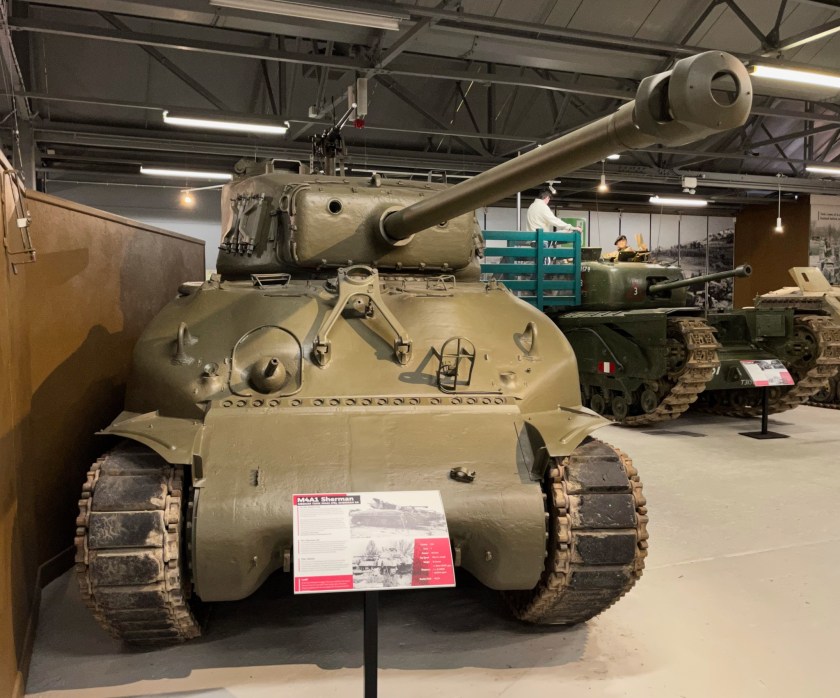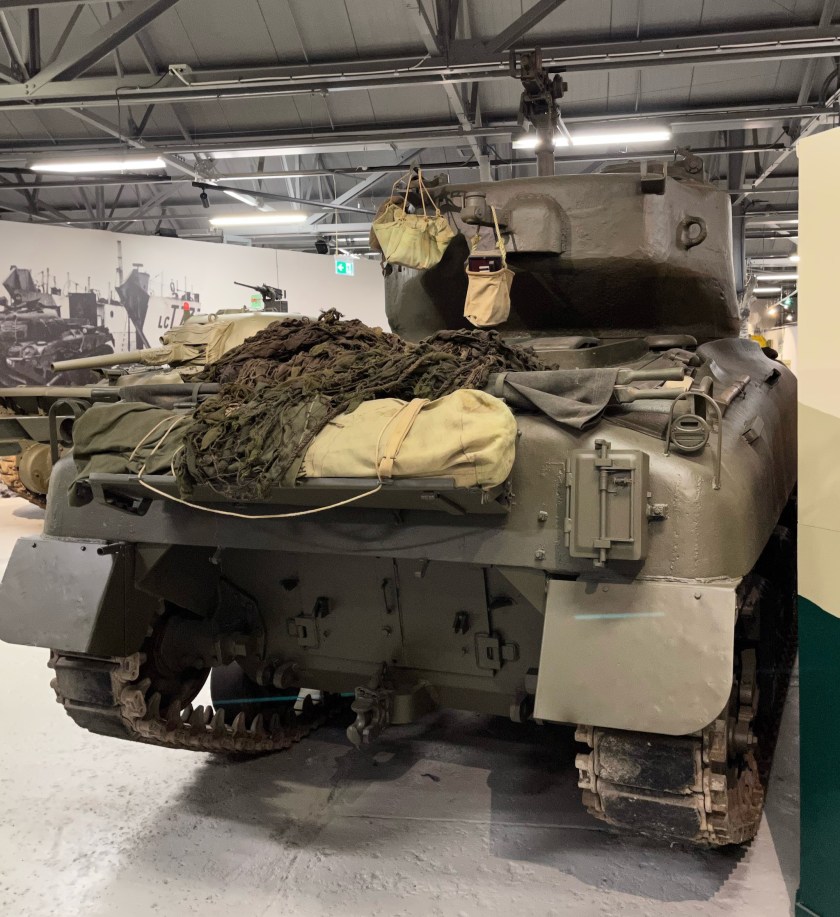The Invictor Tactical Warsuit is a stripped-back variant on the Redemptor Dreadnought frame. Instead of a revenant hero in a sarcophagus, this combat walker is piloted by a live Primaris Space Marine. They are deployed in every capacity, from armoured escort duties to close-range siege breaking and urban monster-hunts. Still the most iconic role for these walkers is as the armoured support for Vanguard Space Marines. Their combination of mid- to close-range firepower, armoured resilience and the selfless mindset of the pilot combine to provide exceptional support.
Author: Felix
The Battle of Matorea
This diorama is one of the newest displays at Warhammer World. This is a Warhammer Old World diorama and shows The Battle of Matorea. A massive conflict between the undead Tomb Kings of Khemri and the valiant Kingdom of Bretonnia. One half of the battlefield you have a Bretonnian castle being defended with Bretonnian knights sallying forth from the battlements. Opposing them are the hordes of undead skeletons, chariots, and monstrous constructs. Flying across the battlefield are the bone dragons of the Tomb Kings of Khemri and Pegasus Rights of the Kingdom of Bretonnia.
This was a very impressive diorama and really showed off both Old World forces.
Settra the Imperishable lays siege to the coastal city of Matorea with a massive undead host as Cecil Gastonne, the Wyrm Slayer rallies its hopelessly outnumbered defenders. Just as the city’s defences begin to fail, the trumpeting of silver clarions sounds in the east, heralding the arrival of Duke Gastille. Have the duke and his knights arrived in time to lift the siege, or will they join the doomed defenders in a heroic death?
The castle was scratch built.
The Warhammer World Studio embraced classic modelling techniques to design and craft the landscape and buildings, with minimal use of plastic terrain kits. Built from scratch, the castle’s walls use extruded polystyrene sheets with the brickwork patterns hand carved and textured. The repeated features, such as the battlements, were hand sculpted, then moulds were made from the original so that multiple resin pieces could be cast from them. There are a number of conversions to spot. For instance, the flying Bone Dragons were cut down to individual bones and repositioned.
Bedford 15 CWT General Service Tender Model MWC
The Bedford MW was a general service truck used by the British Armed Forces during the Second World War.
This RAF water tank truck MWC was on display at RAF Cosford.
Despite lacking four wheel drive and so being unsuited for off-road use, the MW’s powerful engine, short wheel base, low centre of gravity and relatively light weight gave it excellent acceleration and almost sports car like handling.
Sherman Crab
The iconic image of D-Day often features landing craft disgorging infantry and the thundering advance of tanks. Yet, less celebrated but equally important, were the specialised vehicles that paved the way for this advance. Among these was the Sherman Crab, a modified M4 Sherman tank designed for a singular, brutal purpose: detonating landmines.
This Sherman Crab was on display at The Tank Museum at Bovington.
The brainchild of a South African officer and developed by the British, the Sherman Crab was a testament to battlefield pragmatism. Its most recognisable feature was the rotating drum mounted on its front, equipped with heavy chains. As the tank lumbered forward, the drum whipped the chains against the ground, detonating any buried mines in its path. This unglamorous but essential task reduced the threat of mines crippling the Allied assault.
The Sherman Crab wasn’t without its limitations. Its flailing mechanism was slow, limiting its speed to a walking pace. Additionally, the flailing process created a massive dust cloud, obscuring the battlefield for both sides. Unlike earlier flail tanks, the Crab’s genius lay in its power source. It didn’t rely on a separate engine, but cleverly drew power from the tank’s own powerful drivetrain, making it more efficient and reliable. While vulnerable when flailing, the Crab retained its main gun, offering some defensive capability. Though the gun was reversed when flailing reducing the capacity to fight back if attacked.
Despite these drawbacks, the Sherman Crab proved its worth on D-Day. The D-Day landings in Normandy on June 6th, 1944, were a defining moment of the war. Allied forces faced heavily fortified German defenses, including extensive minefields protecting the beaches. This is where the Sherman Crab came into its own. Several Crab flail tanks were among the first vehicles to land on the Normandy beaches. Their job was critical: to clear a path for the following infantry and armored units. Despite their slow speed (around 1.25 miles per hour while flailing), the Crabs effectively detonated mines, creating a safer passage for the main assault. Clearing pre-laid minefields was crucial for establishing beachheads and allowing follow-on forces to move inland. The Crab’s effectiveness helped pave the way for the bloody but ultimately successful Allied landings in Normandy.
The Sherman Crab proved to be a valuable asset for the Allies, particularly in Western Europe. While overshadowed by the more famous Sherman tanks in battles, the Crab played a crucial, if unglamorous, role in clearing the path to victory. Its design influenced future mine-clearing vehicles, showcasing the ingenuity employed to overcome the challenges of modern warfare.
Imperial Guard Parade
This incredible Imperial Guard Parade was on display at Warhammer World.
There are some nice details on the edges of the diorama.
I don’t think I noticed the train before.
Another view of the parade.
Ork Mega Dreads
Just what every mekboy wants; an even bigger `Dread! A smoke-belching, hydraulic monster able to tear apart enemy tanks and smash a side lesser war machines with contemptuous ease.
These Ork Mega Dreads were part of the Rynn’s World diorama at Warhammer World.
Inspired by the artwork from the original Warhammer 40000 Rogue Trader rulebook, this diorama shows the Crimson Fists making a heroic last stand against hordes of Orks.
More photographs of the Ork Mega Dread at Warhammer World.
Also more photographs in the Ork Mega Dread Miniatures Gallery.
I have one on my workbench, but it needs to be finished off… I bought mine at GamesDay 2009 and purchased it with two Killkannons as I didn’t think much of the Rippa-Claw, it looked flimsy in comparison to the model as a whole.
M4A1 Sherman Tank
The first standard-production 76 mm gun-armed Sherman was an M4A1, accepted in January 1944, which first saw combat in July 1944 during Operation Cobra.
The 76mm-armed Sherman began to enter British and South African service around the time of the Gothic Line battles. This was because versions armed with the original 75mm gun were in short supply. In Italy, both types were used more against German fortifications than tanks.
The Gothic Line was a German and Italian defensive line of the Italian Campaign of World War II. It formed the Germans’ last major line of defence along the summits of the northern part of the Apennine Mountains during the fighting retreat of the German forces in Italy against the Allied Armies in Italy,
The new 76mm gun made the Sherman more capable against enemy tanks than the 75mm it replaced, although not by as much as had been hoped. In contrast, its High Explosive shell was actually less powerful, and in Italy this saw much more use. Both types were used by all Allied nations until the end of the war, and 76mm Shermans continued in service around the world into the 1960s.
This M4A1 Sherman Tank was on display at The Tank Museum. It was one of 3,426 Sherman IlAs built by the Pressed Steel Car company in Chicago during 1944 and early 1945. It has modifications suggesting it was upgraded under the Mutual Defense Assistance Program during the 1950s, which supplied Shermans to European nations. It came to The Tank Museum in 1989.
Lockheed Hercules C130K Mk3
First flown as a prototype for the United States Air Force in August 1954, the C-130 Hercules, as a troop transport, disaster relief and aerial tanker aircraft has been a mainstay of the RAF transport fleet since the late 1960s (along with those of many other air forces); it has seen extensive operational use including the Falklands, Iraq and Afghanistan.
The example at RAF Museum Cosford was the last RAF C130K Mk.3 to be retired.
This Hercules C3 XV202 served with the Royal Air Force from 1967 to 2011.
I’ve always liked the concept of gaming scenarios which include the C-130 Hercules, probably down to the Raid on Entebbe, which of course has been the subject of many films.
There are plenty of 1/72 model kits of the Hercules, but for 15mm or 28mm games there is less or no choice.
Siege of Volganoff
The Siege of Volganoff was originally displayed as the Siege of Altdorf at Games Day 2010 and was then put into place at Warhammer World in 2015. A few years later it was reduced in size. The Chaos forces were replaced with Orcs and the the “new” diorama was entitled the Siege of Volganoff.
The diorama has changed quite a bit over the years. More photographs of the Siege of Volganoff.
Special Operations Team
Free on the cover of the April issue of Wargames Illustrated was a plastic Special Operations Team sprue from Warlord Games.
You get a plastic frame containing parts to build 8 Special Operations Soldiers.
The sculpts are generic enough to be used as regular troops, special forces, SWAT, mercenaries, insurgents or terrorists of many different nationalities.
This is the Warlord Games painted models.
These are nice crisp castings with a range of weapons and poses.
I have been thinking they would be useful for a range of near future end of the world scenarios. So I bought the copy of Wargames Illustrated.



































